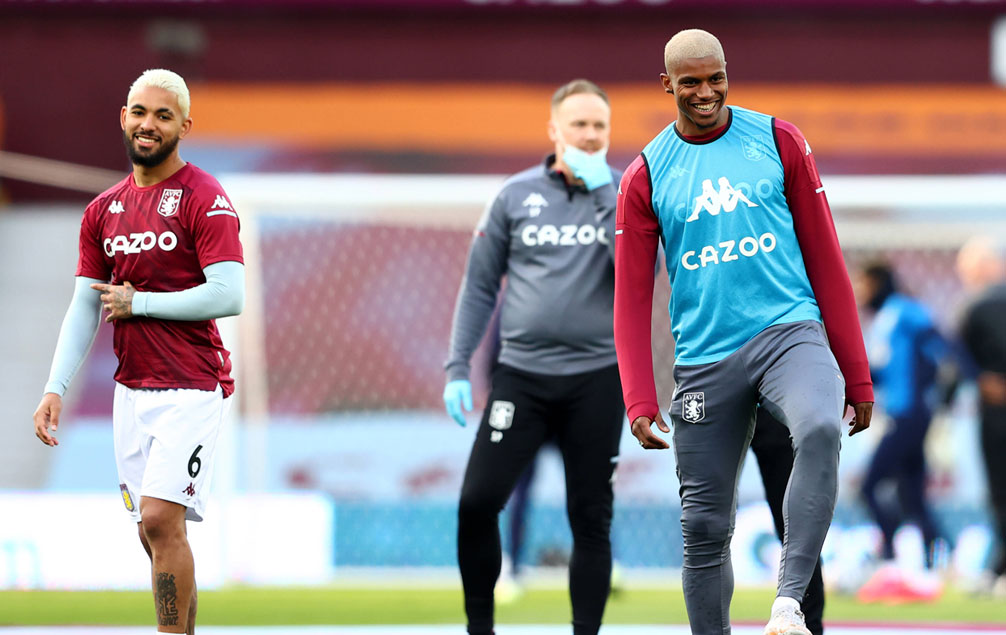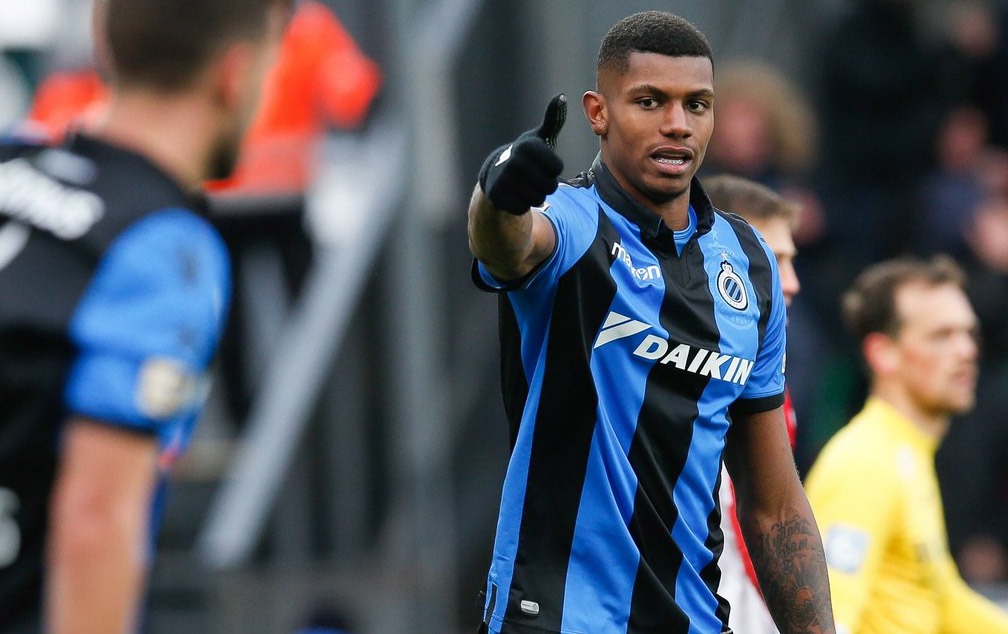
[ad_1]
Brazilian flair, samba football and South American skills had rarely graced the many boggy pitches across the United Kingdom let alone Villa Park, until on a chill February night in 1972 when Santos FC travelled to the second city with some global icons on show for the 55,000 in attendance.
70p was the admittance fee to watch the greatest player on Earth in the flesh in what was a once in a lifetime opportunity to marvel at the cosmic talent of Pele. Greeted on the Villa Park turf with a few hard-hitting tackles from Charlie Aitken and Chris Nicholl, the Brazilian didn’t mind it rough and tough back then.
Claret turnstiles didn’t stop spinning in the lead up to a fixture seemingly forgotten in football folklore. Edu’s spectacular free-kick was the South American signature on a night that those lucky Villa fans will remember for watching a few of the game’s original legends, despite actually winning the game 2-1.
While only three of the four floodlights functioned for much of the game, the Brazilians were hardly blinded by the lights, but in fact, as it’s pictured when Pele raised his hand to the Villa Park faithful, he looked in awe of the arena he’d played in for the first and last time.
On that night, almost 60 years had passed since one of the more famous tales in the deep-rooted history of our beautiful game occurred. It’s widely regarded that Brazil’s first-ever football match was against Exeter City in 1914.
In one of sport’s most extraordinary moments, the fixture went on to form the Brazilian national side. Local newspapers reported unprecedented interest in the game as the 6,000-capacity ground – which to this day is owned by Fluminense – was full well before kick-off.
A century since that day and only seven days after Brazil held the 2014 World Cup in Rio, the minimalistic Estádio das Laranjeiras – located marginally east of the prestigious 78,000 seater Maracanã Stadium – was well shaded by Paubrasilia trees surrounding the ground’s perimeter, bathed in the Brazilian sunshine.
Often an exercise in futility, pre-season tours from Shanghai to Sydney can be nothing more than a burden for professional footballers, but when League Two’s Exeter City went in search of some warm weather training, teenager Ollie Watkins was included in the squad to kick-start his professional career amongst plush forest canopy surroundings.
Over 120 Grecians fans crossed the Atlantic Ocean to witness the reunion of this fascinating battle. For an 18-year-old who wasn’t yet used to first-team training at the Cliff Hill Training Ground in Exeter, this was an introduction to football culture like no other for the current Aston Villa forward.
Only a few miles away, a 16-year-old Douglas Luiz was breaking through as the next big thing at Vasco da Gama. On Nova Holanda’s samba pitches, located directly north up the neighbouring hillsides around the Estádio das Laranjeiras, Luiz had been honing his special gift for years in his birthplace. Only the most talented, technical players have the opportunity to represent their roots rather than escape the challenges of a former life.
Born with the football between his feet, Luiz grew up on the periphery of Rio not far from carnivalesque amphitheatres, with noise and colour all in rhythm to the playfulness and creativity of Nova Holanda.
Space is sacred within the tight confines between shanty buildings and so, every spare inch is dedicated to soccer. Enemy fractions might only be several blocks away, but the heart of Nova Holanda pounds as Rio’s northern sprawl realises lifeblood stronger than any other on the globe. Pitter-patter pitter-patter, bare-feet clap the gravel and smack the ball to the ovation of onlookers delighted to watch friends move freely on a pitch so unique to these parts.
The favela nurtured the raw ability Luiz has possessed since his teens and by circumstance holds the typical traits of a South American midfielder. If England is the home of soccer, Brazil is its enormous playing field, and Luiz didn’t half make use of it.
The only respite from a culture of firearms and flip-flops, cocaine and crack, were the gritty, sweltering tarmac surfaces where Gabriel Jesus, Richarlison and legends Romario and Zico also began their rags to riches fairytale, and Luiz was no different.

Douglas Luiz and Wesley’s Brazilian bond
A neat first touch, a footballing brain and a strong upper body just about cover the basic qualities of ‘Dougie’ – the Brummie adopted midfielder who continues to make an impression with Villa in the Premier League.
The favela helped nurture the raw ability Luiz has possessed since his teens and by circumstance holds the typical traits of a South American midfielder. His best mate at Villa though, Wesley is by almost every description the polar opposite to what many expect from South American ballers.
Wesley didn’t find his professional breakthrough by becoming the archetypal street player with the skills to stand out even amongst the other hundreds of youngsters who’d spend their days using football as their salvation.
After Wesley spent five years moving around Brazil trying to earn enough money to give up a job in a factory sorting screws, trials at Uberabinha, Sport Juiz de Fora, Atlético Mineiro and Tupi proved unsuccessful. His search for a European breakthrough would eventually arrive, but it was hardly the glamour move that many of his peers would go on to earn.
Located 80 miles north of its capital Bratislava, Wesley would embark on a move to Slovakia as his hunger to stand out from the crowd increased. Although when you’re standing at 6ft 3in and weighing nearly 100kg, it’s no surprise that Wesley didn’t take long to turn a few heads.
While he saw himself more as an attacking midfielder despite his lack of finesse nor naturally skilled game, there was one thing that the burly centre-forward had going for him that his admirers back home could relate to.
Wesley has in fact fulfilled his dream of making it as a professional footballer despite having one leg that is almost three centimetres shorter than the other, just like one of Brazil’s national icons, Garrincha whose right leg was six centimetres shorter than his left.
Garrincha’s physical deformity had caused concerns for both Vasco and Fluminense who rejected the chance to take him on after trials. It appeared that fate would decide that he’d play for the lone star of Botafogo and the rest is history.
For Wesley, while his break in Brazil never came to fruition, Club Brugge took a punt after the Brazilian

He was only 19 years old at the time and the Belgian club were initially concerned about injury prevention. Yet Wesley has never experienced any problems in that respect after spending much of his childhood playing futsal and travelling all over Europe trying to earn a professional contract.
Wesley even spent three months with Atlético Madrid’s Under-17 team and scored twice for them in an international youth tournament in Spain, only to end up back in Brazil working on a production line.
Futsal had helped Wesley hone his technical skills and then there was his towering physical presence and explosive speed that helped him contribute to 52 goals in 130 Club Brugge appearances in all competitions.
Wesley was even named the young player of the year in the Belgian Pro League in 2018. Soon, the move he’d spent his whole life trying to achieve would come through the scouting networks trusted by Aston Villa’s former Sporting Director, Jesús García Pitarch.
The Spaniard saw Wesley as the man to fire Villa to safety following the club’s promotion back to the Premier League a few weeks before. Perhaps fans wrote the striker off too soon after he went on a run of 12 league games without scoring after netting four goals in his first eight starts and showed signs that he was adjusting to the most competitive league in world football pretty well.
A cruel injury blow would end his first season in England prematurely as the Brazilian was recklessly fouled by Ben Mee during Villa’s important win at Turf Moor on New Year’s Day where he scored his sixth of the campaign in all competitions.
480 days on from an injury that saw the striker miss almost 16 months of action, his return was one that drew a round of applause from his teammates and Villa’s coaching staff as he was named on the bench during Villa’s 2-2 draw with West Bromwich Albion in April.
Villa’s third South American in a dressing room that features players from 11 different countries is Emiliano Martinez. Although Argentinian, Martinez has previously helped Brazilian youngster Gabriel Martinelli settle in London after he moved from Ituano Futebol Clube to Arsenal in 2019.
Martinez helped, particularly with the 19-year-old’s adaptation period.
“[Martinez is] like my big brother here,” Martinelli said. “He helps me with everything. When I need to borrow something or a car, he helps me with everything. I couldn’t have asked for a better one [big brother].”
After praising Martinelli’s impact at Arsenal last season, Gunners’ defender Rob Holding admitted that Martinez often translates for the winger to help him pick up more English.
Martinelli also previously confirmed that Martinez picks him up from home to drive to training, and said that having the goalkeeper and fellow Brazilian David Luiz helped him settle.
With a South American flavour strong at Villa Park, the stories attached to the players so proud to pull over the famous claret and blue jersey are ones that might not resonate across Perry Barr and Sutton, but they offer invaluable insight to the journey’s Wesley, Douglas Luiz and Martinez have all taken to reach B6.
[ad_2]
Source link

